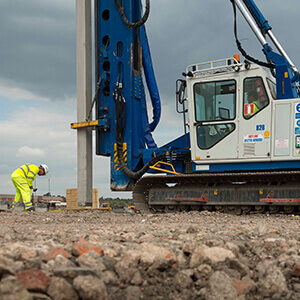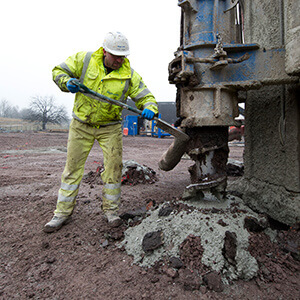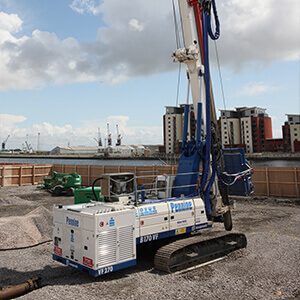Used most frequently for building basements, we can combine this technique with the installation of plunge piles to enable top down construction and thereby reduce the construction programme.
Either open bored or continuous flight auger techniques can be used to create retaining structures to cater for all ground and water conditions. There are three broad types of wall. Essentially primary piles are installed at suitable spacing to allow secondary piles to be installed between.
Secant pile wall (hard/hard)
Secant walls have a positive interlock between adjacent concrete piles, and so are particularly suitable where high water retention is a consideration. Both primary and secondary piles can be reinforced enabling high lateral loads to be supported.
Secant pile wall (hard/soft)
This wall is used where considerations of retained height and water retention are less critical. Primary piles use self-hardening slurry as a water and fine retaining membrane.
Contiguous pile walls
Used in locations where water retention is not a consideration and soils are cohesive, contiguous bored walls dispense with intercut piles completely.
View our technical data sheets below:
Mini Micro Piled Retaining Walls


